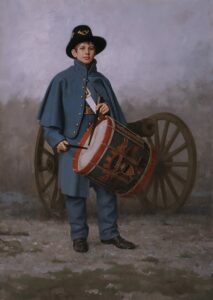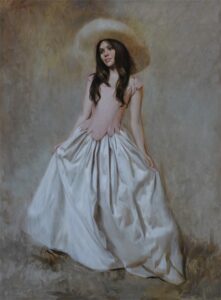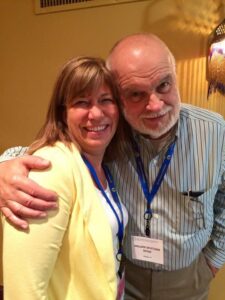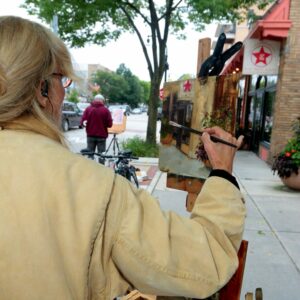 While the benefits are expansive, Plein Air Events take a tremendous amount of time, volunteers, and community support. This is just a brief list of things to consider in order to develop a successful, ongoing event. They are meant to be general guidelines to provide foresight into the endeavor. These are not set in stone and there are many creative ways to develop various aspects of the event.
While the benefits are expansive, Plein Air Events take a tremendous amount of time, volunteers, and community support. This is just a brief list of things to consider in order to develop a successful, ongoing event. They are meant to be general guidelines to provide foresight into the endeavor. These are not set in stone and there are many creative ways to develop various aspects of the event.
To start, here are a few questions you should think about that will help you through the process of establishing an event:
Who is/should be involved?
Art Guild/ Organization, Public Art Committee, Chamber of Commerce, BID, Downtown Organization, City Manager, Private Business, Events Organization, Other. It can often be advantageous to combine more than one organization to support an event.
Why do you want to develop a Plein Air Event?
Fundraiser, Community Awareness, Promote the Arts, Tourism, Education, Other
What is your Mission Statement?
Your mission statement may be as simple as your ‘Why?’ statement, but becomes more expansive when more than one organization is involved.
Can you develop significant community interest
in the form of volunteers and art buyers?
This is the most significant question of all, and one to consider very seriously.
Next, determine the desired benefits and realistically review the requirements.
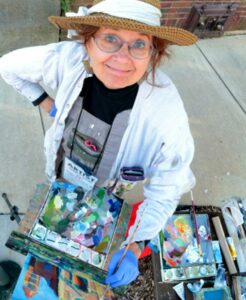 BENEFITS
BENEFITS
- Once established (2-3 years) they can become a significant source of funds
- They can bring unique cross sections of a community together
- They create goodwill within the community
- They support and encourage tourism
- They support local businesses including hotels, restaurants, and retailers
- They can provide a source of education about local history, art, community
- They can raise awareness about local events, history, persons of interest
- They can be used to raise awareness about targeted issues
- They can provide State/National Recognition
REQUIREMENTS
Think of a Plein Air Event as a three-legged stool. Those legs consist of Artists, Buyers and Organizers. If any of the legs are missing, the stool falls over. They play off each other. Quality Artists encourage Buyers. A well-organized event attracts Artists and Buyers. Buyers support the Organizers’ mission and attract Artist.
Artists
Target: 25-50 Qualified Artists
Community Support
Buyers, Volunteers and Sponsorships (Absolutely Key to continued success)
Commitment
It may require 3-5 years to create a profitable, well established event. Plan for that.
Event Committee
4-6 members willing to meet frequently, optimally beginning one year prior to the event.
 Volunteers
Volunteers
Minimum of 12 Volunteers plus one volunteer for every 4 artists greater than 30
Volunteers qualified to:
- Create the prospectus
- Advertise
- Create Marketing Material
- Promote the Event
- Distribute Materials
- Develop a Website, Facebook, Instagram & Blogs
- Solicit Volunteer
- Manage Volunteers
- Continually Communicate with Artists
- Find Venues
- Organize social gatherings
- Accounting
- Solicit Contributions
- Create Artist Information Packets
- Create and Maintain Events Calendar
- Choose a Judges
- Find Housing for Artists and Judges
- Photography – During Event, Awards Ceremony
- Develop a Corporate Sponsorship Program
Display Space
Optimally 3+ feet of wall space per artist
This works backwards – Display Space/3 = # artists
Space should be evenly and well lit
Finally, consider the sources and uses of funds. Financial planning is a key element.
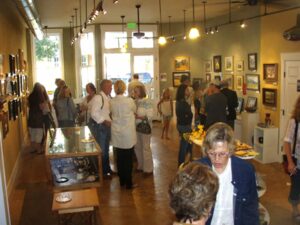 Sources of Funds
Sources of Funds
- $20-50 per artist
- 20-40% Commission per sold painting
- Community and Business Sponsorships
- Donations
- Painting Suppliers’ Sponsorships
- Private Sponsorships
- Grants
- Purchase Awards
 Uses of Funds
Uses of Funds
Minimum $2,000 – $5,000 Advertising & Marketing Budget:
- Cash Prizes
- Venue
- Paid Service (if qualified volunteers are not available)
- Social Event Food & Drink
- Artist Packages
There are so many variations in the events available today. It is important to talk to organizers and artists alike to fully understand the nuances and determine what may, or may not, work for your particular situation.
Thank you for considering hosting a plein air event. They are fun, exciting, engaging and they are a great way to bring art and community together. The benefits are well worth the effort.
